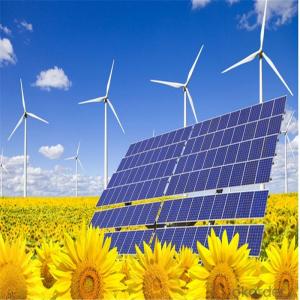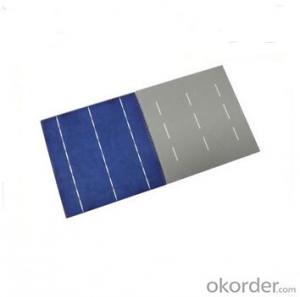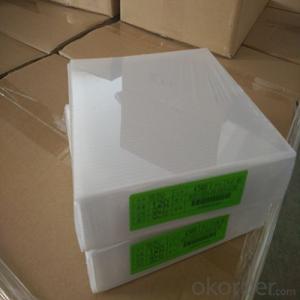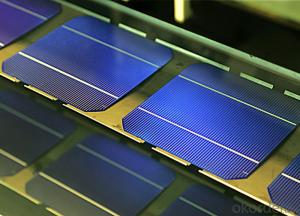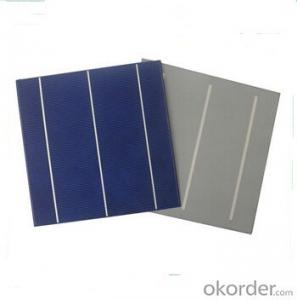Dye Sensitized Solar Cells
Dye Sensitized Solar Cells Related Searches
Except For Solar Cells Weegy Problems With Solar Cells High Power Solar Cells Light Trapping In Solar Cells High Performance Solar Cells High Output Solar Cells High Wattage Solar Cells Energy Transfer In Solar Cells High Efficiency Hvac Systems Recombination In Solar CellsHot Searches
Cheap Solar Cells For Sale Flexible Solar Cells For Sale Q Cells Solar Panels For Sale Printed Solar Cells For Sale Bulk Solar Cells For Sale 6x6 Solar Cells For Sale Broken Solar Cells For Sale Cpv Solar Cells For Sale Photoelectric Cells For Sale Price Of Silicon Solar Cells Price Of Solar Cells Over Time Buy Solar Cells From China Cheap Solar Cells China Best Type Of Solar Cells Flexible Solar Cells Price Q Cells Solar Panels Price 3 Types Of Solar Cells Production Of Solar Cells Common Types Of Solar Cells Q Cells Solar Panel PricesDye Sensitized Solar Cells Supplier & Manufacturer from China
Okorder.com is a professional Dye Sensitized Solar Cells supplier & manufacturer, offers integrated one-stop services including real-time quoting and online cargo tracking. We are funded by CNBM Group, a Fortune 500 enterprise and the largest Dye Sensitized Solar Cells firm in China.Hot Products
FAQ
- Yes, solar cells can be used for powering water pumps. Solar-powered water pumping systems utilize photovoltaic cells to convert sunlight into electricity, which can then be used to power water pumps. These systems are environmentally friendly, cost-effective, and reliable, making them a popular choice for remote areas or locations where grid electricity is not available.
- How's the feedback of using 260 watt photovoltaic solar panel? Anybody ever used that?
- The conversion efficiency of the 260 watt photovoltaic solar panel is 18 %,which is already much better than the one I used before.
- Yes, solar cells can be used in medical devices. Solar cells can provide a renewable and sustainable source of energy for various medical devices, such as remote monitoring systems, wearable devices, and even implantable devices. They can help eliminate the need for frequent battery replacements and provide continuous power supply, making them particularly useful in remote or resource-limited areas.
- Solar cells are typically installed on rooftops using a mounting system that secures the panels in place. This involves attaching metal brackets or rails onto the roof, which act as the support structure for the solar panels. The panels are then placed onto these brackets and secured using clamps or screws. The installation process requires careful positioning and alignment to ensure maximum sunlight exposure for efficient energy generation.
- Yes, solar cells can be used to charge electric vehicles. Solar panels can convert sunlight into electricity, which can then be used to charge the batteries of electric vehicles. This process, known as solar charging or solar-powered charging, is an environmentally friendly and sustainable way to power electric vehicles.
- Yes, solar cells can still be used in countries with limited sunlight. While it is true that solar cells generate more electricity in areas with abundant sunlight, they can still function and produce energy in regions with less sunlight. Advances in solar panel technology, such as the use of more efficient materials and improved designs, have made it possible to harness solar power even in countries with limited sunlight. Additionally, the use of energy storage systems, like batteries, can help store excess energy generated during peak sunlight hours for use during low-light periods. Therefore, solar cells can still be a viable and sustainable energy solution in countries with limited sunlight.
- Yes, solar cells can be used in remote areas without access to the grid. Solar cells, also known as photovoltaic cells, generate electricity from sunlight. They can be installed in remote areas to harness the sun's energy and provide power for various applications such as lighting, water pumping, and charging electronic devices. Solar cells are particularly suitable for off-grid locations as they operate independently of the traditional electric grid, making them a reliable and sustainable solution for remote areas.
- Yes, solar cells can be used to power remote weather stations. Solar cells convert sunlight into electricity, which can be used to power various devices, including weather stations. This makes them an ideal and sustainable solution for providing power to remote locations where traditional grid connectivity may not be available.


















